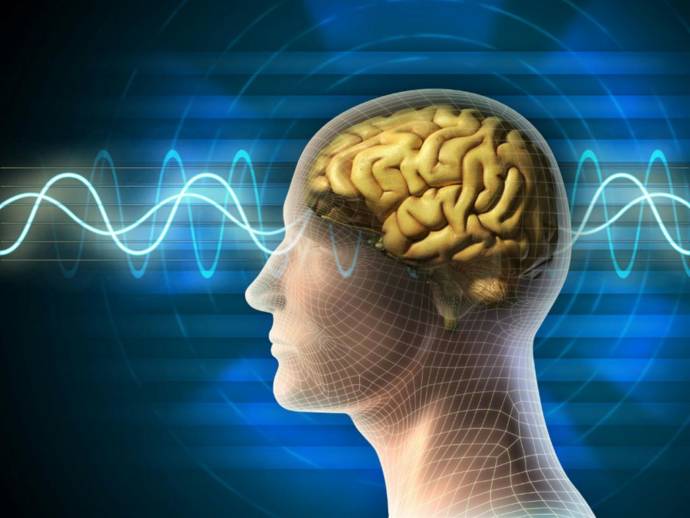Brain hemorrhage is the condition in which the vessels in the brain bursts and there is bleeding inside the brain. Various types of hemorrhage may occur inside the brain. Brain hemorrhage is diagnosed through neurological examination, imaging techniques, and lumbar puncture.
Types
Following are the types of intracranial hemorrhage:
- Epidural hematoma: Epidural hematoma is the condition caused when the blood is collected between the skull and outer covering of the brain. An epidural hematoma is caused when there is an impact on the skull that may lead to a skull fracture.
- Subarachnoid hemorrhage: It is a life-threatening condition that occurs when there is bleeding in the subarachnoid space. Subarachnoid space is the space between the arachnoid and the pia mater. The condition can be caused due to arteriovenous malformation of head injury.
- Subdural hematoma: This condition occurs when the blood is collected between dura mater and arachnoid. It is caused due to a severe head injury. Due to the head injury, the small bridging veins gets treated leading to the collection of blood below the dura mater.
- Intracerebral hemorrhage: This type of hemorrhage occurs within the tissues and ventricles of the brain. The condition may be caused due to head injury or brain tumor. It is also caused due to untreated hypertension. Following are the types of Intracerebral hemorrhage:
- Intraparenchymal hemorrhage: This type of hemorrhage occurs within the brain tissues and usually caused due to hypertension or arteriovenous malformation.
- Intraventricular hemorrhage: This type of hemorrhage occurs in the ventricles of the brain and caused by the vascular abnormality.
Causes
- Head injury: Traumatic brain injury is the leading cause of brain hemorrhage. It is caused due to blowing on the head, which results in tearing of the vessels. This is due to the crashing of the brain inside the skulls causing harm to internal vessels.
- Hypertension: Unmanaged hypertension causes severe damage to the vessels resulting in their rupture. People with prolonged untreated hypertension are at higher risk for a brain hemorrhage.
- Vascular malformation: Arteriovenous malformation is the condition present from birth. This condition is characterized by weak blood vessels. This condition is diagnosed at the time of presentation of symptoms.
- Bleeding disorders: Various bleeding disorders causes bleeding inside the brain. This includes hemophilia, leukemia, and thrombocytopenia. However, this cause of hemorrhage is less prevalent t as compared to traumatic injury.
- Medications: Various medications alter the property of the blood and clotting mechanism thereby increasing the risk of bleeding. These medications include aspirin, other blood thinning agents, prolong use of antibiotics and radiation therapy.
- Aneurysm: This condition is caused by wearing and swelling of the arterial walls. The risk of bursting these vessels is high.
- Liver disease: Presence of liver disease increases the risk of brain hemorrhage.
- Brain tumor: Intratumor vascularization and thin-walled vessels also with the necrosis in tumor causes hemorrhage in the brain.
Symptoms
Following are the symptoms associated with brain hemorrhage:
- Moderate to a severe headache
- Seizures
- Dizziness
- Nausea and vomiting
- Confusion and disorientation
- Difficulty swallowing and breathing
- Numbness and weakness
- Vision problems
- Lack of coordination
- Loss of consciousness
- Stupor and lethargy
- Poor memory and reduced concentration
How to diagnose
- Physical evaluation: Evaluation of the physical symptoms are done to analyze the neurological symptoms of the patient. The physician will identify the suddenly occurred symptoms including loss of consciousness, neurological deficit, coma, and seizures. The sudden symptoms occurred in the patient are probably due to hemorrhagic shock.
- Imaging techniques: various imaging techniques are used to diagnose brain hemorrhage. CT scan is done to confirm bleeding inside the brain while MRI scan provides the actual cause of bleeding. Aneurysm and vascular malformations can be identified through an angiogram.
- Lab tests: Various lab tests are done which includes prothrombin time, electrolyte level, the presence of infection and complete blood cell count.
- Lumbar Puncture: Lumbar puncture is done to identify the presence of bilirubin in spinal fluid which is also a parameter for diagnosing intracerebral hemorrhage.
Risk neglecting Brain hemorrhage
Following are the complication experienced by the patient with neglected brain hemorrhage:
- Hematoma expansion: Hemorrhage is generally caused due to a hematoma. However, if the hemorrhage is neglected, it leads to the expansion of hematoma. Expansion of hematoma is a factor for poor prognosis of the condition.
- Increased intracranial pressure: There is increased intracranial pressure due to hemorrhage. This leads to symptoms such as a headache. Unmanaged increased intracranial pressure results in further damage in the brain and may also cause death.
- Increased incidence of seizures: Occurrence of seizures is one of the symptoms of brain hemorrhage but when hemorrhage is neglected, the frequency of seizures increases.
- Increased blood pressure: Various mechanisms, such as increased intracranial pressure and activation of neuro-vegetative signaling, increases blood pressure.
- Infection: Infection is generally caused after brain hemorrhage due to pulmonary edema and dysphagia. Invasive procedures are also responsible for causing infection.
Stages
Evolution of hematoma is divided into five distinct phases which are revealed through MRI. These stages include:
- Hyperacute: Less than 12 hours after evolution
- Acute: 12 hours to 2 days after evolution
- Early subacute: 2 days to 7 days after evolution
- Late subacute: 8 days to 1 month after evolution
- Chronic: More than 1 month after evolution
The evolution of hematoma depends upon the location, size, and etiology.
Foods
- Avocado oil
- Fatty fish containing omega-3 fatty acids
- Almonds
- Turmeric
- Chocolates
- Broccoli
- Coffee
- Pumpkin seeds
- Citrus fruits
- Eggs
- Blueberries
Prevention tips
- Manage chronic condition such as hypertension.
- Control stress.
- Perform meditation and yoga to improve mental health.
- Avoid smoking.
- Take blood thinning drugs only under a physician’s guidance.
- Avoid foods that increase cholesterol.
When to see a doctor
Call your doctor if:
- You feel disoriented
- You experience a sudden and severe headache
- You sense vision changes
- You feel numbness in muscles
- You have the feeling of nausea and vomiting





